https://github.com/NREL/BioReactorDesign
Bio Reactor Design (BiRD): a toolbox to simulate and analyze different designs of bioreactors in OpenFOAM
https://github.com/NREL/BioReactorDesign
bioreactor inverse-modelling meshing openfoam postprocessing
Last synced: 7 months ago
JSON representation
Bio Reactor Design (BiRD): a toolbox to simulate and analyze different designs of bioreactors in OpenFOAM
- Host: GitHub
- URL: https://github.com/NREL/BioReactorDesign
- Owner: NREL
- License: bsd-3-clause
- Created: 2023-05-17T00:21:33.000Z (about 2 years ago)
- Default Branch: main
- Last Pushed: 2024-12-14T00:56:19.000Z (7 months ago)
- Last Synced: 2024-12-14T11:13:56.656Z (7 months ago)
- Topics: bioreactor, inverse-modelling, meshing, openfoam, postprocessing
- Language: Liquid
- Homepage:
- Size: 77.4 MB
- Stars: 14
- Watchers: 6
- Forks: 5
- Open Issues: 9
-
Metadata Files:
- Readme: README.md
- License: LICENSE
Awesome Lists containing this project
- open-sustainable-technology - BiRD - A toolbox to simulate and analyze different designs of bioreactors in OpenFOAM. (Renewable Energy / Bioenergy)
README
# Bio Reactor Design (BiRD) Toolbox [](https://github.com/NREL/BioReactorDesign/actions/workflows/ci.yml) [](https://pypi.org/project/NREL-bird/) [](https://badge.fury.io/py/nrel-bird)
## Installation for developers
```bash
conda create --name bird python=3.10
conda activate bird
git clone https://github.com/NREL/BioReactorDesign.git
cd BioReactorDesign
pip install -e .
```
## Installation for users
```bash
conda create --name bird python=3.10
conda activate bird
pip install nrel-bird
```
## OpenFOAM solvers
Place the attached models in `OFsolvers` into the same arborescence in your `$FOAM_APP` directory. These compile with `openFOAM-9`
We provide a new drag model `Grace`, a new interfacial composition model `Higbie` and various other models which magnitude can be controlled via an efficiency factor `*_limited`
## Meshing
### Generate Stir tank mesh
```bash
inp=bird/meshing/stir_tank_mesh_templates/base_tank/tank_par.yaml
out=bird/meshing/stir_tank_case_templates/base/system/blockMeshDict
python applications/write_stir_tank_mesh.py -i $inp -o $out
```
Generates a blockMeshDict
Then activate openFoam environment (tested with OpenFoam9) and mesh with
```bash
blockMesh -dict system/blockMeshDict
stitchMesh -perfect -overwrite inside_to_hub inside_to_hub_copy
stitchMesh -perfect -overwrite hub_to_rotor hub_to_rotor_copy
transformPoints "rotate=((0 0 1)(0 1 0))":
```
Mesh visualized in Paraview
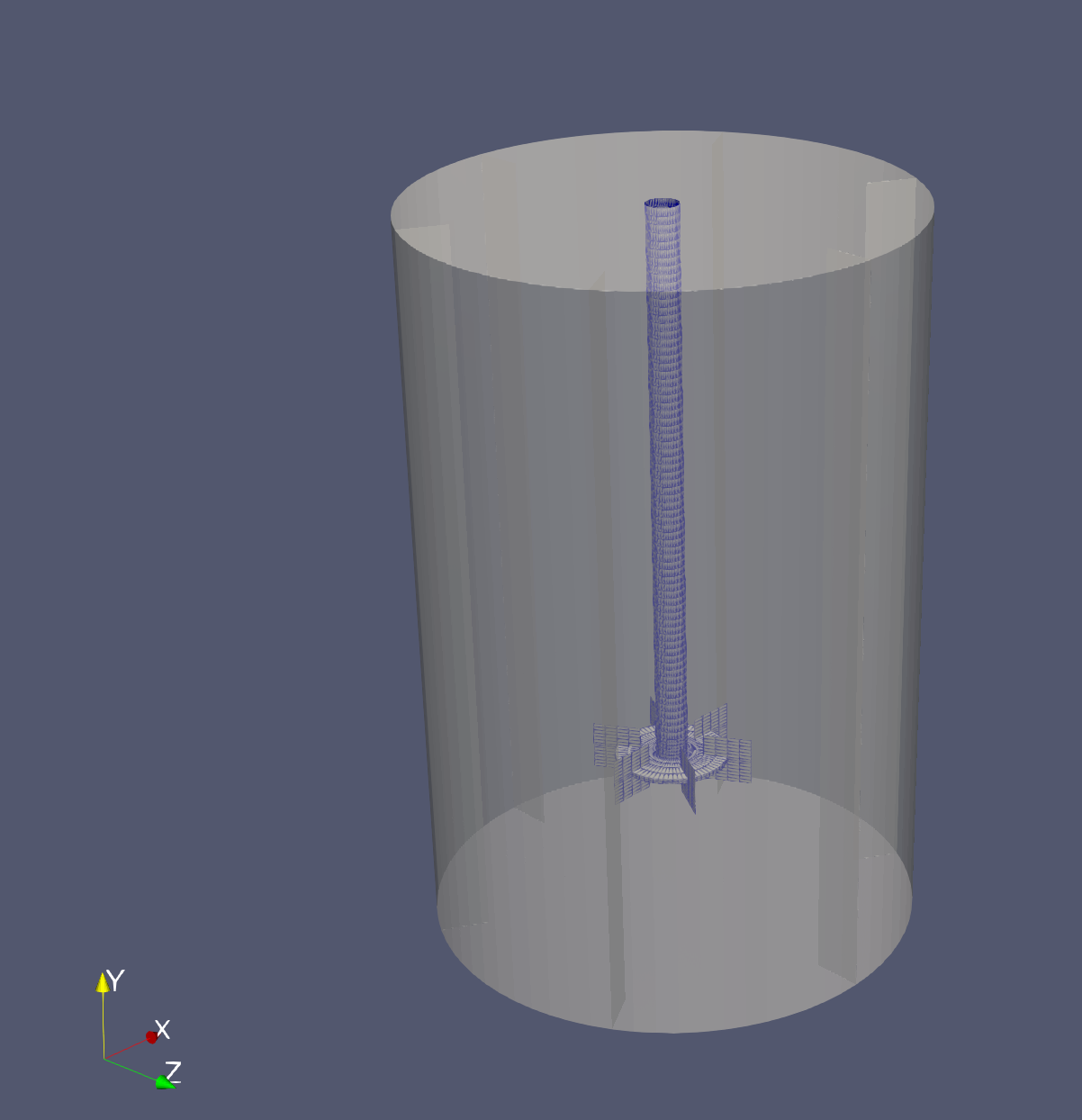
### Block cylindrical meshing
Generates `blockMeshDict` in `system`
```bash
root=`pwd`
caseFolder=bird/meshing/block_cyl_cases_templates/case
mesh_temp=bird/meshing/block_cyl_mesh_templates/sideSparger
python applications/write_block_cyl_mesh.py -i $mesh_temp/input.json -t $mesh_temp/topology.json -o $caseFolder/system
```
Then activate openFoam environment (tested with OpenFoam9) and mesh with
```bash
cd $caseFolder
blockMesh
transformPoints "scale=(0.001 0.001 0.001)"
transformPoints "rotate=((0 0 1) (0 1 0))"
cd $root
```
Will generate this

#### How to change the dimensions or mesh refinement
All dimensions and mesh are controlled by the input file `input.json`.
The input file can also be in `.yaml` format. The parser will decide the file format based on its extension.
See `bird/meshing/block_cyl_mesh_templates/baseColumn/` for an example of `.yaml`
#### How to change the arrangement of concentric cylinders
The block topology is controlled by the `topology.json`
Always work with a schematic. Here is the schematic for this case
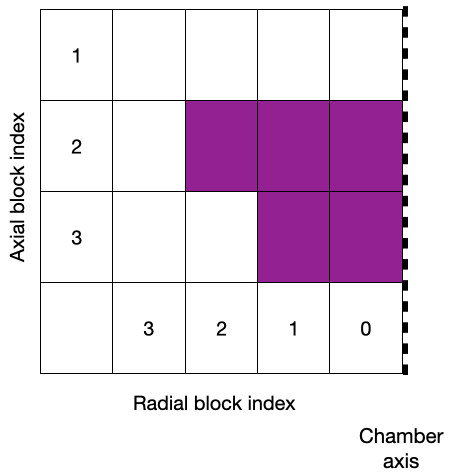
The purple blocks are walls (not meshed) and the white blocks are fluid blocks (meshed). The symmetry axis is indicated as a dashed line
In the `topology.json`, the purple blocks are defined as
```
"Walls": {
"Support": [
{"R": 0, "L": 3},
{"R": 1, "L": 3}
],
"Sparger": [
{"R": 0, "L": 2},
{"R": 1, "L": 2},
{"R": 2, "L": 2}
]
}
```
#### How to change boundaries
Boundaries are defined with three types, `top`, `bottom` and `lateral`
In the case of sparger walls shown below with the red lines

the boundary is defined in the `topology.json` as
```
"Boundary": {
"wall_sparger":[
{"type": "bottom", "Rmin": 2, "Rmax": 2, "Lmin": 2, "Lmax": 3},
{"type": "top", "Rmin": 0, "Rmax": 0, "Lmin": 1, "Lmax": 2},
{"type": "top", "Rmin": 1, "Rmax": 1, "Lmin": 1, "Lmax": 2},
{"type": "top", "Rmin": 2, "Rmax": 2, "Lmin": 1, "Lmax": 2}
],
...
```
In the case of sparger inlet shown below with the red line

the boundary is defined in the `topology.json` as
```
"Boundary": {
"inlet": [
{"type": "lateral", "Rmin": 2, "Rmax": 3, "Lmin": 2, "Lmax": 2}
],
...
```
#### Manual
```
usage: write_block_cyl_mesh.py [-h] -i -t -o
Block cylindrical meshing
options:
-h, --help show this help message and exit
-i , --input_file Input file for meshing and geometry parameters
-t , --topo_file Block description of the configuration
-o , --output_folder
Output folder for blockMeshDict
```
### Block rectangular meshing
Generates `blockMeshDict` in `system`
```bash
root=`pwd`
caseFolder=bird/meshing/block_rect_cases_templates/case
mesh_temp=bird/meshing/block_rect_mesh_templates/loopReactor
python applications/write_block_rect_mesh.py -i $mesh_temp/input.json -o $caseFolder/system
```
Then activate openFoam environment (tested with OpenFoam9) and mesh with
```bash
cd $caseFolder
blockMesh
cd $root
```
Will generate this
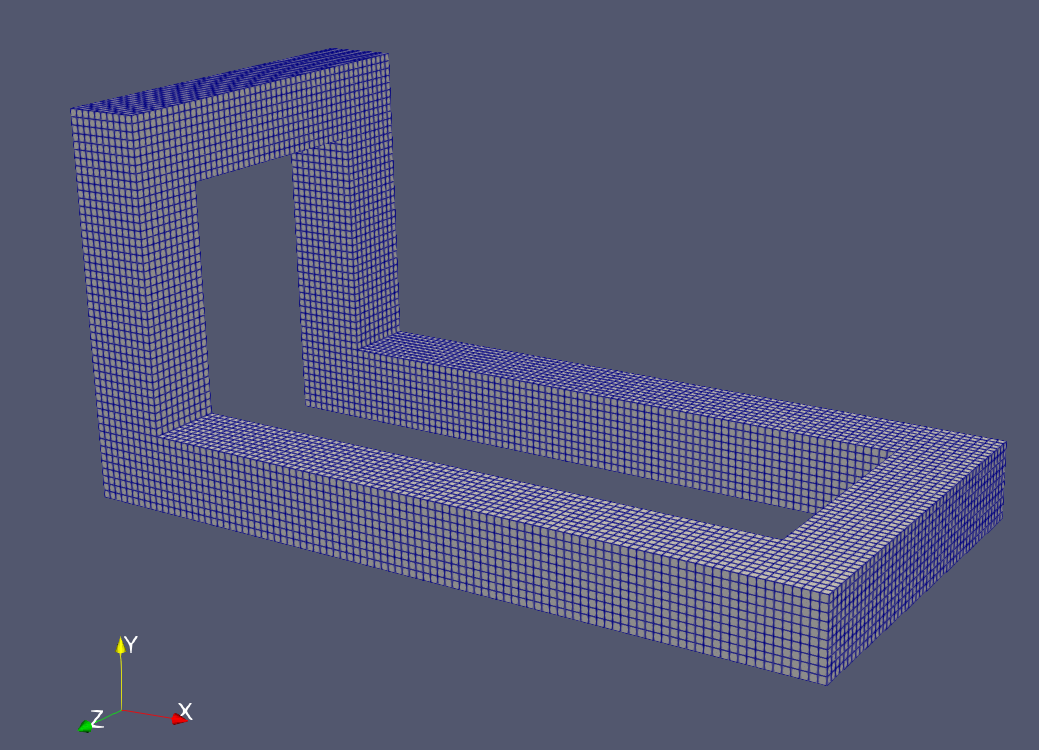
#### How to change the block rectangular geometry
The geometry of the block cylindrical mesh is defined within a 3D domain (X,Y,Z). The blocks that represent the fluid domain are a subset of a block rectangular background domain. The fluid blocks are defined using the geometry corners. For the mesh shown above, the geometry corners are the red blocks shown below
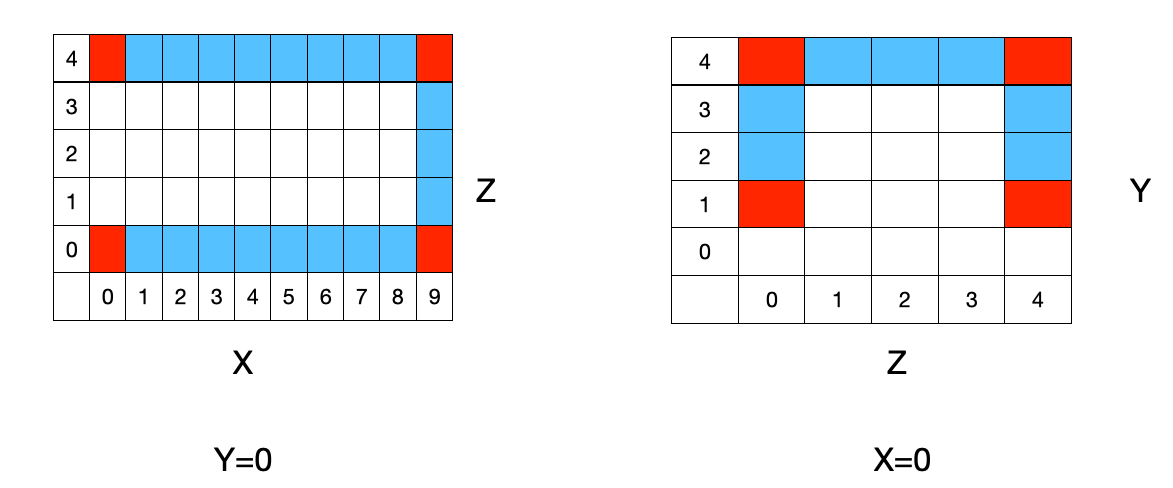
The corners are defined in the `input.json`
```
"Geometry": {
"Fluids": [
[ [0,0,0], [9,0,0], [9,0,4], [0,0,4] ],
[ [0,1,4], [0,4,4], [0,4,0], [0,1,0] ]
]
}
...
```
To see how to use this on an actual case see `OFsolvers/tutorial_cases/loop_reactor`
## Preprocess
### Generate STL mesh
Boundaries may be specified with `surfaceToPatch` utility in OpenFOAM, based on STL files that can be generated with
`python applications/write_stl_patch.py -v`
Generates
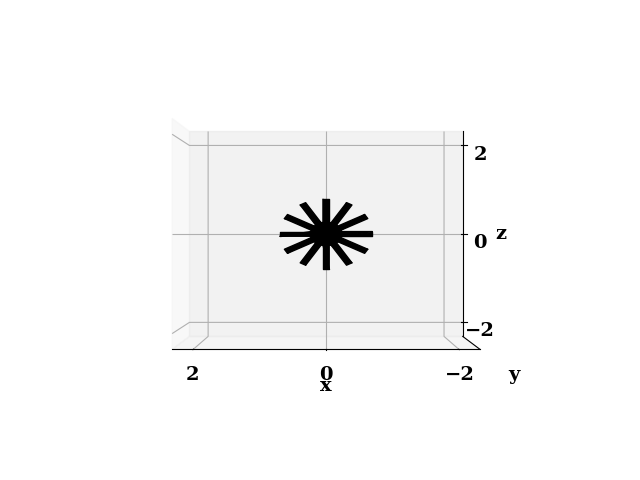
To see how to use this on an actual case see `OFsolvers/tutorial_cases/loop_reactor`
### Manual
```
usage: write_stl_patch.py [-h] [-i] [-v]
Generate boundary patch
options:
-h, --help show this help message and exit
-i , --input Boundary patch Json input
-v, --verbose plot on screen
```
### How to change the set of shapes in the boundary patch
Edit the json files read when generating the mesh. In the case below, the boundary condition `inlets` consists of 3 discs
```
{
"inlets": [
{"type": "circle", "centx": 5.0, "centy": 0.0, "centz": 0.5, "radius": 0.4, "normal_dir": 1,"nelements": 50},
{"type": "circle", "centx": 2.5, "centy": 0.0, "centz": 0.5, "radius": 0.4, "normal_dir": 1,"nelements": 50},
{"type": "circle", "centx": 7.5, "centy": 0.0, "centz": 0.5, "radius": 0.4, "normal_dir": 1,"nelements": 50}
],
}
...
```
## Postprocess
### Perform early prediction
`python applications/early_prediction.py -df bird/postprocess/data_early`
Generates

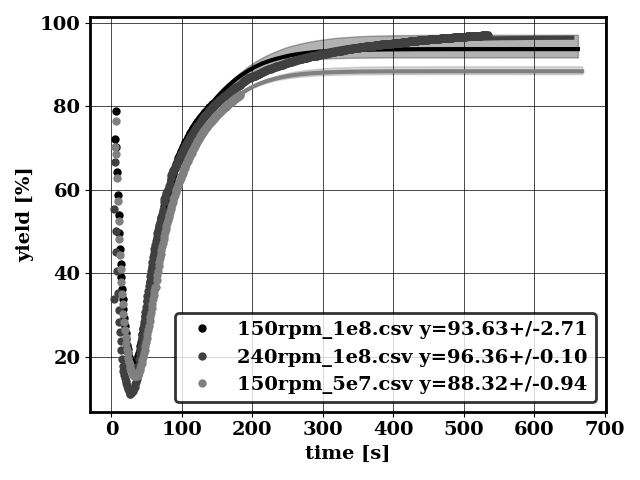
#### Manual
```
usage: early_prediction.py [-h] -df [-func]
Early prediction
options:
-h, --help show this help message and exit
-df , --dataFolder Data folder containing multiple QOI time histories
-func , --functionalForm
functional form used to perform extrapolation
```
### Plot conditional means
`python applications/compute_conditional_mean.py -f bird/postprocess/data_conditional_mean -avg 2`
Generates (among others)
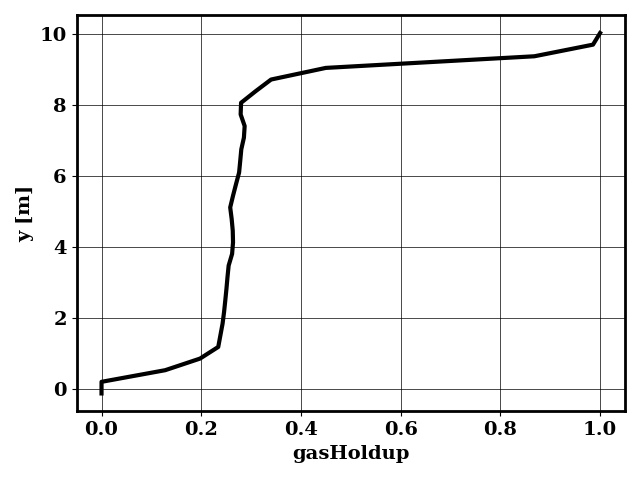

```bash
usage: compute_conditional_mean.py [-h] -f [-vert] [-avg] [--fl FL [FL ...]] [-n [...]]
Compute conditional means of OpenFOAM fields
options:
-h, --help show this help message and exit
-f , --caseFolder caseFolder to analyze
-vert , --verticalDirection
Index of vertical direction
-avg , --windowAve Window Average
--fl FL [FL ...], --field_list FL [FL ...]
List of fields to plot
-n [ ...], --names [ ...]
names of cases
```
## Formatting [](https://github.com/psf/black) [](https://pycqa.github.io/isort/)
Code formatting and import sorting are done automatically with `black` and `isort`.
Fix imports and format : `pip install black isort; bash fixFormat.sh`
Spelling is checked but not automatically fixed using `codespell`
## References
Software record [SWR 24-35](https://www.osti.gov/biblio/2319227)
To cite BioReactorDesign use these articles on [CO2 interphase mass transfer (open access)](https://arxiv.org/pdf/2404.19636) on [aerobic bioreactors](https://www.sciencedirect.com/science/article/pii/S0263876218304337)
and on [butanediol synthesis](https://www.sciencedirect.com/science/article/pii/S0263876223004689)
```
@article{hassanaly2024inverse,
title={Bayesian calibration of bubble size dynamics applied to \ce{CO2} gas fermenters},
author={Hassanaly, Malik and Parra-Alvarez, John M. and Rahimi, Mohammad J. and Sitaraman, Hariswaran},
journal={Under Review},
year={2024},
}
@article{rahimi2018computational,
title={Computational fluid dynamics study of full-scale aerobic bioreactors: Evaluation of gas--liquid mass transfer, oxygen uptake, and dynamic oxygen distribution},
author={Rahimi, Mohammad J and Sitaraman, Hariswaran and Humbird, David and Stickel, Jonathan J},
journal={Chemical Engineering Research and Design},
volume={139},
pages={283--295},
year={2018},
publisher={Elsevier}
}
@article{sitaraman2023reacting,
title={A reacting multiphase computational flow model for 2, 3-butanediol synthesis in industrial-scale bioreactors},
author={Sitaraman, Hariswaran and Lischeske, James and Lu, Yimin and Stickel, Jonathan},
journal={Chemical Engineering Research and Design},
volume={197},
pages={38--52},
year={2023},
publisher={Elsevier}
}
```
## Acknowledgments
This work was authored by the National Renewable Energy Laboratory (NREL), operated by Alliance for Sustainable Energy, LLC, for the U.S. Department of Energy (DOE) under Contract No. DE-AC36-08GO28308. This work was supported by funding from DOE Bioenergy Technologies Office (BETO) [CO2RUe consortium](https://www.energy.gov/eere/co2rue). The research was performed using computational resources sponsored by the Department of Energy's Office of Energy Efficiency and Renewable Energy and located at the National Renewable Energy Laboratory. The views expressed in the article do not necessarily represent the views of the DOE or the U.S. Government. The U.S. Government retains and the publisher, by accepting the article for publication, acknowledges that the U.S. Government retains a nonexclusive, paid-up, irrevocable, worldwide license to publish or reproduce the published form of this work, or allow others to do so, for U.S. Government purposes.